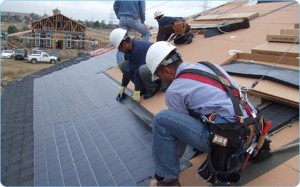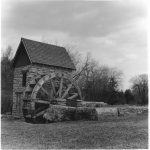Valleys are complex parts of roofing systems. They are usually made from durable and long-lasting materials. However, extreme weather conditions, sudden temperature changes as well as other unavoidable factors often lead to damages like cracking, rusting and leaking. Be able to solve these kinds of problems by knowing how to repair a roof valley leak.
Materials Needed
A few simple and easy-to-find materials are important to accomplish this moderately difficult task. For this, you need to have roofing nails, a hammer and a pry bar. Additionally, buy new shingles in order to achieve the best possible results.
Steps
First, work your way up to the roof valley and then check for torn, missing or heavily damaged shingles. This is one of the most common causes of leaking in this particular part of the roofing system. Likewise, check for parts that are loose and easily fall apart. The edges of the shingles found in the surrounding areas of the damaged shingles must be lifted up.
Get the pry bar and then insert it to where the nails are placed. Remove the nails to loosen up the shingles completely. Slowly pull out every bad shingle. Be sure to cover all the parts that are damaged in order to prevent recurring leakage problems.
Search for the metal flashing. Try to fold its edge until you produce a 1-inch wide hem. This will create a gap leading the water to go down directly to the gutter. Install the new shingles into the area of the valley. Remember to position each of them in the same direction like the rest of the fine shingles on top of the roof.
Check the edges of the shingles once again. Look for the overlapping section and then hammer a couple of roofing nails at the top corners of every new shingle. Return the overlapping shingles back to their original position, which is right above the newly installed shingles.
Additional Tips and Other Helpful Information
In terms of materials, it is not necessary to purchase matching shingles when fixing roof valley leaks, since no one can actually see how they look like on top of the roof. As long as they are sufficient to stop the leaks, these materials are good enough. When using the pry bar, be as gentle as you can be because applying too much force can only cause further damage. This can do you no good and can only aggravate the problem even more, which means additional shingles and extra costs.



